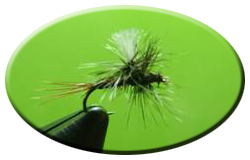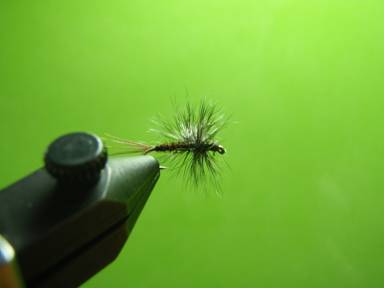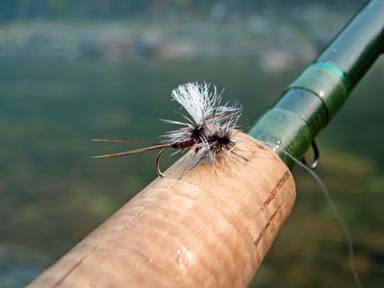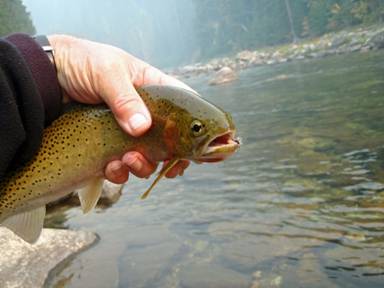PT MDE 9DH

That would be a Pheasant Tail Mahogany Dun Emerger with 90 Degree Hackling.
There have been lots of cutthroat trout taking emergers on my home water recently, but there is no way to get into the part of the crick where they have been feeding to sample what is in the drift. Since there is reportedly a hatch of mahogany duns on this river this time of year, I decided to treat the trout to a new version of one of their staples.
The new fly emerged from the idea of a floating nymph, with an innovation that I started using last year – the 90 degree hackling technique. It is a three material fly (unless you count the brown thread and size 16 dry fly hook) comprised of pheasant tail fibers, grizzly hackle, and white antron.




Tying this fly is so simple that I am going to dispense with pix of the tying sequence and just give a description of how I tie it.
Lay a thread base using a long tag end that will be used to counter wrap over the abdomen.
Tie in four or five pheasant tail fibers at the bend for the tail/shuck. Wrap the thread forward to the thorax area. Twist the bundle of PT fibers, wrap them forward in touching turns to the thorax area, and tie off. Counter wrap the tag end of the tying thread with a couple turns over the abdomen.
Tie in and post a white antron post.
Tie in grizzly hackle. Take five or six turns of the hackle on the post and then wrap the hackle three turns around the shank through the parachute hackling in front of the post. Tie off the hackle and trim the hackle on the underside of the shank flush with the shank.
The fly is designed to ride low. It does. Some of the takes have been very aggressive, splashy rises but a lot have been very subtle, not even leaving the ring of the rise.
It is questionable whether the fish have been taking this as a mahogany dun emerger or as an attractor. But they have been taking it in good numbers in all the usual places.
For more great info, check out:
Beginning Fly Tying | Intermediate Fly Tying | Advanced Fly Tying.
